How do I use the dishwasher?

It is important for many people to figure out how to use a dishwasher. The general operating instructions and rules are the same for all more or less common models - it makes sense to find out the special subtleties in the technical passport. It is also important to answer this question: is it necessary to open the dishwasher after the end of the program.

Preparation
Manufacturers always prescribe that the dishwasher be tested in a blank format before starting. To get started correctly, the dishes are not loaded. The purpose of this launch is to remove fine debris and residual grease. It will be possible to immediately assess whether the mechanics are working correctly. For example, it will be precisely determined:
-
heating water;
-
drain speed;
-
possible pinching of wires and hoses;
-
fluid leaks at the connection points.
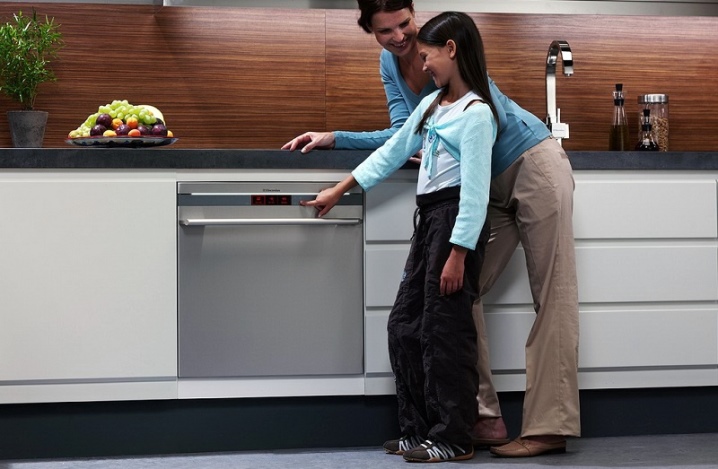
The test goes through all the requirements of a conventional car wash. The mode is chosen at your discretion. When rinsing is complete, wait for the machine to cool down. Then the first wash is carried out - always with a full load of dishes. Transport wires or plastic strands, spacers must be removed immediately.
Before the first start-up, the filters are washed under running water. Sometimes filters can be removed only when they are disassembled into 2-3 parts. When the initial wash cycle with loading is completed, the machine should be allowed to cool for 10-12 minutes. Then the inventory must be removed and carefully inspected in order to check the quality of washing, the correctness of work.
The general scheme of the first start does not differ depending on the brand of the dishwasher. Embedded versions can be installed in niches only after successfully passing the test. It is imperative to check at the first start whether the connection to the mains is correct. Detected leaks are eliminated immediately.
Of course, the packaging material and all kinds of promotional stickers must be removed immediately.
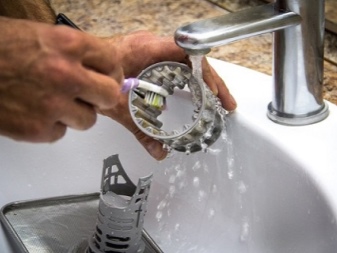

It is very important to immediately determine the degree of water hardness in the water supply system. For this, test strips are usually added to the delivery set - and if they are not there, then you can always buy additionally. It is worth noting that for the first launch, special detergents are usually intended, which give an enhanced cleaning and disinfecting effect, cope with industrial blockages (and are not intended for everyday use). When the work is correct, you can put the dishwasher on a level (with twisting the legs of the case). Rotation of nozzles is checked by twisting by hand.
In the initial start-up, the type of detergent composition and the salt consumption that have already been established by the engineers during the design are used. The dosage of the rinse aid should be kept to a minimum. Later it will be necessary to pick it up separately. Effective cleaning of the chamber is ensured by selecting an especially long program and setting the maximum temperature.
It is necessary to continuously monitor the operation of the dishwasher during a test run.
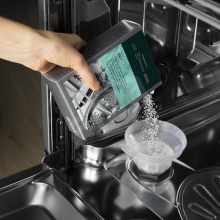
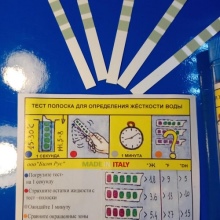
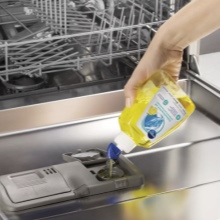
Use of funds
Detergents
These formulations fall into 3 main categories:
-
gel;
-
powder;
-
tablet "3 in 1".

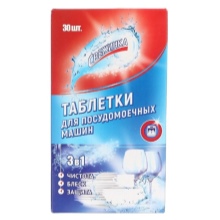
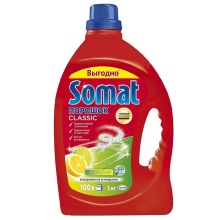
The choice of a specific option is determined by the instructions of the manufacturers. Tablet preparations are consumed in the amount of 1 piece for 1 washing session. However, practice has shown that powders and gels are much more economical. It should be understood that reagents that are too cheap, by definition, do not guarantee the full quality of the wash.On the contrary, if the goal is to provide very high quality work, additional costs will have to be incurred.
This does not mean that the most expensive product is always better. You just need to remember that only drugs of at least an average price group work optimally. The rest depends on personal priorities. Sometimes the right decision can only be made after a series of private trials. It is advisable to focus on the reputation of a particular manufacturer - only products of well-known brands are capable of giving a decent result.
It is useful to pay attention to the reviews as well. And it is advisable to study them on several independent resources at once. The type (form of the drug) is selected individually for themselves. The habits of all people are markedly different.
If there is no experience of using it, then you need to try different options.
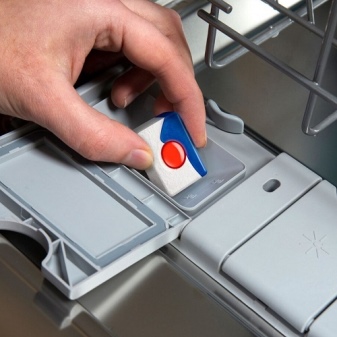
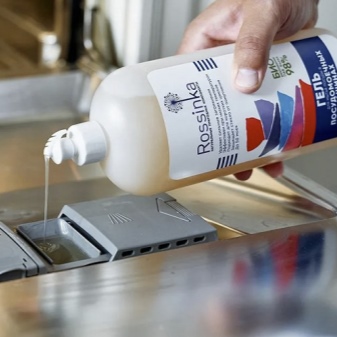
It is also necessary to pay attention to the chemical composition of the reagents. It is worth familiarizing yourself with the action of each substance added there. In addition, the degree of safety of the reagents must also be taken into account. The wrong choice threatens not only people, but also the dishwashers themselves. One cannot think that the more substances, or the higher their concentration, the better.
The tablets do not always have time to completely dissolve in a short washing cycle; some old machines simply cannot process them correctly. This means that the composition is not fully used. The efficiency of his work falls. Powder can be spilled out quite easily.
Experts consider gel mixtures to be the most practical solution.

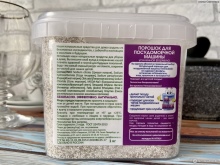
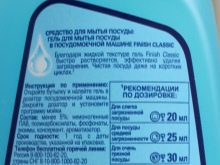
Additional
In theory, you can use a dishwasher without salt, when you use not a powder, but a gel or tablet. But all experts strongly recommend adding regeneration salts at all times. Otherwise, scale will spread very intensively. Additionally, you must use rinse aid. These components add shine to the items and refresh the dishes.
The best results are achieved when cleaning glassware. Glasses and wine glasses are best washed with salt. But before loading it for the first time, it is required to pour water into the ion-exchange compartment. Excess fluid is removed with a sponge.
On subsequent launches, there is no need for such a procedure.
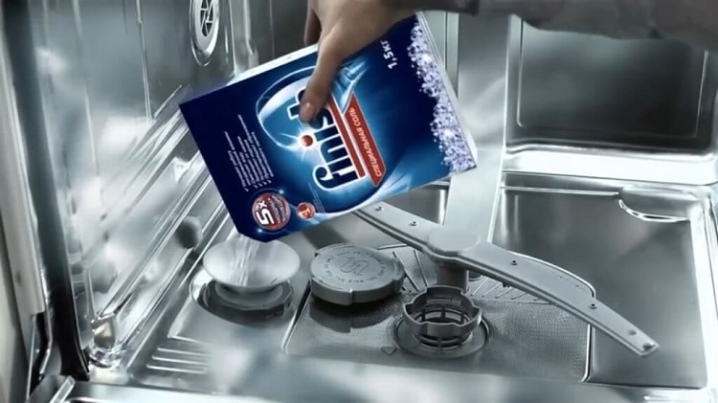
The rejection of salt and the appearance of limescale causes increased current consumption. It will be less effective and wear on components will increase. Therefore, saving on salt supplements is illusory. Despite the similar composition of dishwasher and cooking salt, they are not interchangeable. Food spice can harm dishwashers due to foreign matter and hard abrasive particles.
Moreover, even the size of the granules may differ. Moreover, dishwashing salt has to be cleaned much more thoroughly. Table salt should only be used as a last resort as a temporary measure. Even in this case, it is not recommended to fill the compartment to 100%.
In addition to softener and rinse aid, you must also use refreshing agents.

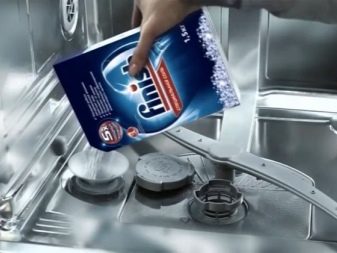
Clogged dishes become a favorable place for all kinds of microbial colonies. After flushing, food debris does not die, but only moves to the machine itself. There, microorganisms also find favorable conditions for reproduction. This leads not only to a bad smell, but also to serious dangers for people. Fresheners become a substitute for antiseptics, they eliminate microflora and therefore suppress unpleasant odors, and special additives create an attractive aroma.
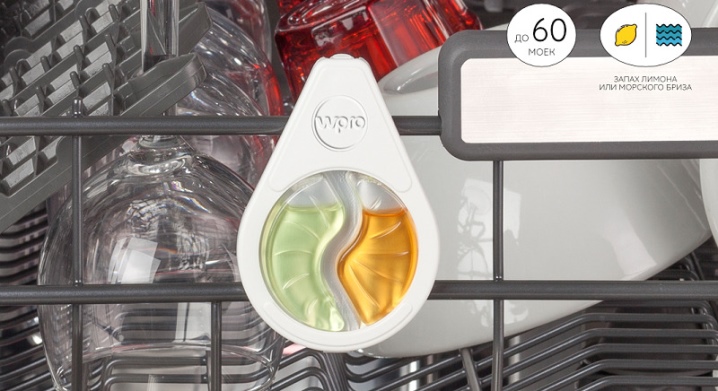
How do I arrange the dishes?
But no drugs will help if the dishes themselves are laid out incorrectly. Although specific directions are given in the instructions, the general principles are quite predictable and the same. Pots, pans and other large items are placed in the lowest basket. As far as possible, they are placed vertically. Be sure to make sure that there are gaps between the dishes for free ingress of water and detergent composition.
Plates in the upper compartment are placed vertically in any case. Upside down you need to lay out:
-
glasses;
-
glasses;
-
mugs.
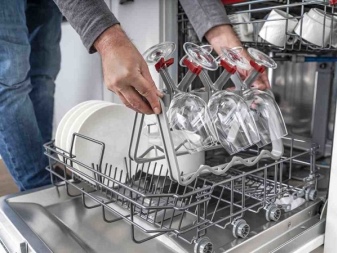
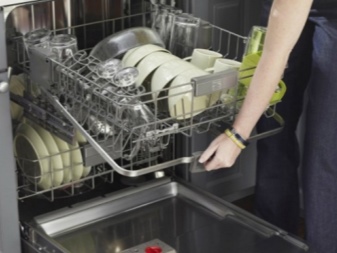
Some dishwasher models are designed for horizontal arrangement of cutlery in special compartments. But sometimes there are other options, so you just have to follow the logic from which the engineers proceeded. It should be noted that washing in dishwashers is not suitable or highly undesirable for:
-
aluminum and cast iron containers;
-
porcelain dishes;
-
plastics;
-
wooden items;
-
crystal;
-
faience.
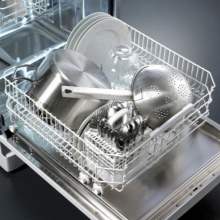
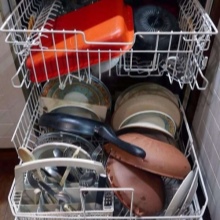
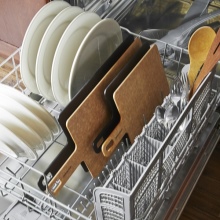
Program selection
This nuance is very important, because in many respects it depends on it the ability to use the dishwasher efficiently. In addition to the program itself, that is, the mode, you can usually also select the water temperature. The higher it is, the more efficiently the dishes will be washed. However, this will increase energy consumption, and some items may be irreversibly damaged. The difference between specific modes can be:
-
the duration of the process;
-
water consumption;
-
addition or absence of auxiliary stages of work.
Almost all modern dishwashing equipment is capable of working automatically. In this mode, she selects the parameters herself. But by default, special sensors are needed, and one should be interested in whether they are in a particular model.
The fast version of the work is half as long as the standard one, it is suitable only for moderately clogged dishes, drying is not provided.
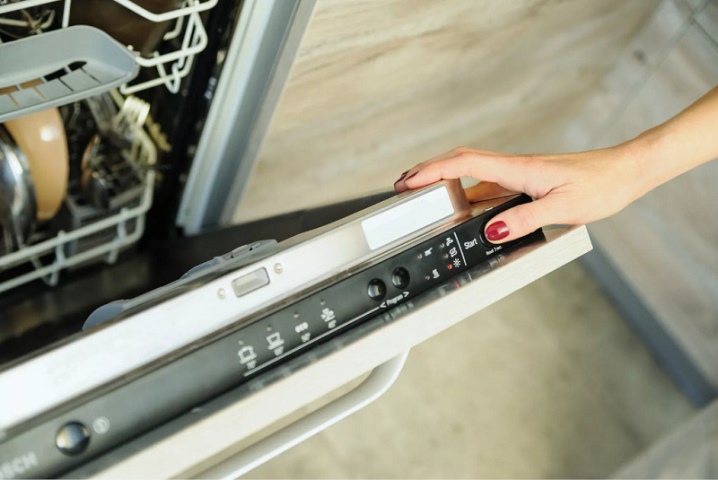
There are still other options:
-
the delicate program is designed for the dishes most susceptible to negative influences;
-
an economical option copes well with dirty dishes, saves water and electricity;
-
intensive mode is accompanied by the highest water consumption and increased heating;
-
manufacturer-specific programs.


Basic rules of work
All manufacturers disclaim responsibility for any consequences resulting from improper installation or operating errors. Therefore, the operating instructions should be studied as carefully as possible even before the first start. The common approach of being read when something goes wrong is notoriously wrong. Dishwashers can only be used by adults and, with careful supervision and preparation, adolescents from 12 years old. Trusting the unit to children, people with mental disabilities is unacceptable.
Common recommendations about opening the dishwasher after finishing work are not entirely correct. With active correct use of the device, regular cleaning and replacement of filters, there is no particular need for this. But with occasional washing of dishes, airing is useful. The door is opened a little, so there is no need to fear that it will occupy the entire passage.
Do not think that if the dishwasher is turned on often, then it is not economical enough. You just need to focus on the state of the dishes being cleaned and other needs. It is the mode selected for these factors that is most optimal and allows you to really save money, time and effort. Trying to use lean functions all the time is more likely to be ruinous.
All the same, you will have to wash especially dirty dishes thoroughly.


To use the dishwasher correctly, you need to consider the following subtleties:
- furniture near and above it must be thoroughly fixed;
-
if the inlet hose is deformed, the device must be immediately de-energized;
-
it is imperative to ground the dishwasher itself, its wires and sockets;
-
when connected to new or inactive pipes for a long time, the water must drain;
-
it is necessary to carefully check the power supply parameters and install a separate connection line with cut-off machines, with fuses;
-
it is necessary to replace the network cable only with the help of professionals;
-
you cannot change the design of the dishwasher at your own discretion;
-
the water from the dishwasher is not drinkable;
-
you must not remove the dishes from the device before the end of washing;
-
Detergent remaining on the surface of the dishes is normal and is not a cause for alarm;
-
do not put easily flammable substances or products on the dishwasher;
-
the machine must not be washed with high pressure water or cleaned with a stream of steam.


Care Tips
Taking good care of your dishwashers is just as important as choosing good programs and detergents. Each manufacturer offers proprietary grease and limescale removers. The same formulations are also suitable for combating limescale. You need to use them once every 1-2 months. But some drugs can be used once every 4-6 months, which is determined by the factory instructions.
From natural remedies, vinegar helps to fight scale. It also suppresses extraneous odors. Small nozzles are cleaned with a simple thin wire. Mechanical cleaning of hard-to-reach areas is greatly simplified with unnecessary toothbrushes.
It is very helpful to rinse the dishes in advance.
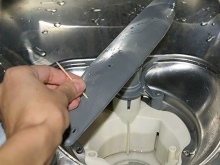

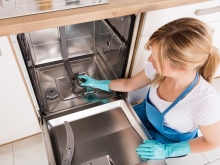
After each washing session, the seal and the chamber are supposed to be wiped with dry wipes. Wipe the control panel and door once a week. The filters are to be washed every 7 days. Every month the dishwasher is cleaned with citric acid. Other requirements:
-
during prophylaxis, the chamber must be empty;
-
you can get into the narrowest places with toothpicks, needles and knitting needles;
-
especially carefully it is required to clean the bottom of the door - garbage is actively collecting there;
-
it is advisable to wash the frontal plane with sponges with a gentle detergent;
-
complex dirt from the surface must be removed with liquid soap;
-
wet cleaning is carried out only after de-energizing.
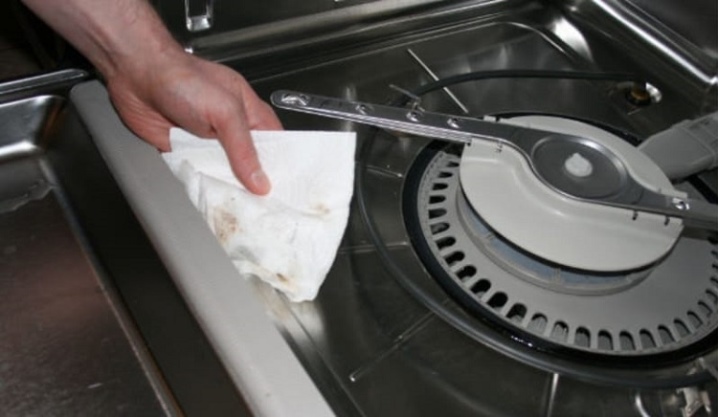













The comment was sent successfully.